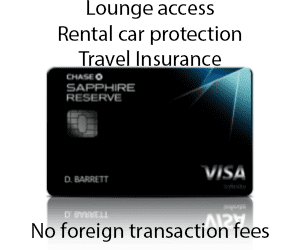With Gustavo Petro’s “Total Peace” in Shambles, Criminal Groups Sprout Branches
The prospects for peace in Colombia appear increasingly remote as illegal armed groups fragment amid a gold and cocaine bonanza.
President Gustavo Petro’s Total Peace (Paz Total) policy, designed to negotiate agreements with the country’s main armed groups and criminal gangs, is struggling to make any headway as he passes the halfway point of his four-year administration. The negotiations have had profound effects on the criminal dynamics in the country.
After initial progress in dialogue with the National Liberation Army (Ejército de Liberación Nacional – ELN), talks collapsed in May last year when a faction of the group split off to pursue separate peace negotiations. The ELN’s extensive infrastructure and leadership in Venezuela, where Nicolás Maduro remains in power following a widely criticized election, has further undermined the chances of peace with the Marxist-Leninist rebel force.
Similarly, negotiations with dissidents of the demobilized Revolutionary Armed Forces of Colombia (Fuerzas Armadas Revolucionarias de Colombia – FARC) have faced significant setbacks. Fragmentation within these groups has sparked infighting, with splinter factions emerging from the Central General Staff (Estado Mayor Central – EMC) and the Second Marquetalia, the two largest dissident factions. As a result, the government is engaging with only a small portion of each group.
The country’s most powerful drug-trafficking organization, the Gaitanist Self-Defense Forces of Colombia (Autodefensas Gaitanistas de Colombia – AGC), remains largely outside the Total Peace framework. Efforts have been stalled by the absence of a legal framework for negotiations and a potential peace deal. Similar legal obstacles have hindered progress in “urban peace laboratories” in cities like Buenaventura, Quibdó, and Medellín, where gangs dominate neighborhoods through drug trafficking and extortion rackets.
As Petro begins the third year of his presidency, InSight Crime reviews the key developments in Colombia’s peace dialogues and examines their criminal implications for 2025.
ELN
Initial progress with the ELN effectively unraveled as disputes with the government led to the collapse of negotiations.
In January last year, the Comuneros del Sur Front (Frente Comuneros del Sur – FCS), an ELN faction in southern Nariño, broke ranks, announcing plans to pursue separate “regional dialogue” with the government. Frustrated by the limited progress at the national level and growing threats from rival groups, the FCS sought a more localized approach. However, ELN top commander Eliecer Erlinto Chamorro, alias “Antonio García,” condemned these parallel dialogues as unauthorized and illegitimate.
SEE ALSO: Kidnappings Surge in Colombia Amid ELN Peace Negotiations
By May, the FCS formally severed ties with the ELN, emerging as a dissident faction of the guerrilla group. It quickly established dialogue with the government, advanced in peace talks, and even committed to a partial weapons handover, according to Carlos Augusto Erazo Murcia, head of the government’s negotiating team.
This was followed by the collapse of a bilateral ceasefire between the ELN and the government, which expired in August without renewal. After the ceasefire lapse, the ELN escalated hostilities by attacking a military base in Arauca in September, killing three soldiers. In response, the government suspended peace talks indefinitely.
The ELN and the government resumed talks on November 25, agreeing to reconvene in 2025 to reassess the dialogue process and explore the possibility of a renewed ceasefire.
The ELN also stands to benefit greatly from what was widely considered a stolen election in Venezuela, extending by another six years of Maduro’s time at the helm of the country. Venezuela remains a critical hub for the ELN, hosting much of its leadership and infrastructure.
Since the FARC’s demobilization in 2016, the ELN has expanded its presence in Venezuela and Colombia’s border departments, strengthening its operations through a symbiotic relationship with the Maduro regime. The group now controls entire sections of the border, managing smuggling and drug-trafficking corridors between the two countries, while maintaining corridors moving troops. Its influence spans eight of Venezuela’s 24 states, with significant income derived from controlling illegal mining and cocaine production zones.
With little interference and often support from military forces and local officials within the Maduro regime—who depend on the income generated by these groups, particularly amid severe US sanctions—the ELN has solidified its presence along the 2,219 km border with Venezuela and uses this haven to project into Colombia. This growing entrenchment further undermines the Total Peace initiative.
Ex-FARC
Government dialogue with the EMC, the largest ex-FARC organization, has also splintered the group. In March, Petro suspended a bilateral ceasefire with the EMC in the departments of Cauca, Valle del Cauca, and Nariño due to ongoing violence against Indigenous communities. This decision deepened internal divisions within the EMC. Its leader, Néstor Gregorio Vera Fernández, alias “Iván Mordisco,” refused further negotiations until the ceasefire was reinstated, while another faction, led by Alexander Díaz, alias “Calarcá Córdoba,” opted to continue talks.
By April, the government expelled Mordisco’s faction from the peace talks, shifting its focus to negotiations exclusively with Calarcá’s bloc. In July, his group signed a bilateral ceasefire agreement, marking a tentative step forward. However, significant challenges remain: Calarcá’s faction has been accused of threatening demobilized FARC members in Caquetá, and in December, six soldiers were killed in a minefield allegedly planted by the group.
Mordisco’s wing, on the other hand, has intensified violent activities, particularly in Cauca, an important region for coca cultivation and drug trafficking. By September, Cauca had recorded 466 violent incidents over 12 months, the most of any department during that period, with numbers continuing to rise through the end of 2024.
Meanwhile, the Second Marquetalia, a separate group of FARC dissidents led by Luciano Marín Arango, alias “Iván Márquez,” became the third major group to enter Total Peace negotiations in 2024. However, internal divisions also plagued this effort. In November, two key factions—the Border Command and the Pacific Guerrilla Coordinating Committee (Coordinadora Guerrillera del Pacífico)—broke away, frustrated by Márquez’s leadership. They formed the National Bolivarian Army Coordinator (Coordinadora Nacional Ejército Bolivariano), led by José Vicente Lesmes, alias “Walter Mendoza.”
AGC and Urban Groups
The AGC has been largely excluded from the Total Peace initiative thus far, but signs emerged in 2024 that Petro sought to change this. In July, he authorized dialogue with the group, signaling a potential shift in policy.
But significant obstacles remain. The government’s classification of the AGC as a high-impact organized crime group, rather than a political organization like the ELN or FARC dissidents, has become a sticking point in the negotiations. This designation precludes the AGC from seeking transitional justice terms, such as guarantees against extradition and amnesty, similar to those offered to the FARC in the 2016 peace agreement. Under Colombian law, high-impact organized crime groups are only eligible for limited judicial benefits, such as reduced sentences, making negotiations far less appealing for the AGC.
SEE ALSO: GameChangers 2023: The Cocaine Flash-to-Bang in 2024
Despite minor progress—such as the attorney general lifting arrest warrants for key AGC leaders—negotiations have yielded few tangible results. Tensions remain high: in December, the military bombed an AGC camp in northern Antioquia, underscoring the ongoing hostilities.
Moreover, skepticism about the AGC’s intentions persists. Some analysts suggest the group is using negotiations as a tactical maneuver to secure a bilateral ceasefire and reduce military pressure, rather than genuinely committing to demobilization. At the same time, its ongoing territorial expansion and dominance over key criminal economies fuel doubts about its willingness to disarm.
The absence of a legal framework for gang demobilization, or “transition to legality,” as it is officially termed, has also hindered progress in cities like Medellín, Quibdó, and Buenaventura.
Efforts to pass legislation to formalize a framework for gang demobilization have stalled in Colombia’s gridlocked congress, leaving urban peace efforts in limbo.
In Medellín, several gangs agreed to reduce violence following Petro’s 2022 election, resulting in a notable drop in homicide rates. In June 2023, Petro initiated a dialogue table with former gang leaders at Itagüí prison, but progress faltered in 2024.
In Quibdó, the gangs Los Mexicanos, Lokos Yam, and RPS began talks in August 2023, achieving significant milestones like a commitment to halt the extortion of teachers and health workers. But in September 2024, a ceasefire between the gangs collapsed, amidst incursions by the AGC into the city. In December, Petro authorized exploratory talks to include three additional groups—the Zetas, Cabí, and AGC—in the Quibdó table.
In Buenaventura, negotiations with the Spartans and Shottas—which together command over 1,700 members—have produced mixed results. The groups agreed to a truce in August 2023, significantly reducing violence throughout 2024. While tensions flared in March when the Spartans temporarily withdrew from the negotiations, they eventually returned to the table, and have renewed the ceasefire, currently set to last until February 2025.
Looking Forward
Several key factors will significantly influence peace negotiations in 2025.
First, the fragmentation of major groups within the Total Peace process highlights the challenges of negotiating with organizations that appear unified but are, in fact, loose coalitions of diverse factions. The Comuneros del Sur’s split from the ELN exposed the group’s limited control over its regional fronts. Similarly, the EMC’s divided leadership—between Mordisco and Calarcá—mirrors the internal tensions within the Second Marquetalia, where Iván Márquez has struggled to maintain cohesion among factions like the Border Command.
These fractures risk escalating violence as splinter groups vie for territorial control and factions excluded from peace talks increase attacks on government targets.
Since the EMC split, clashes between Mordisco’s and Calarcá’s factions have escalated in Putumayo, a key region for coca cultivation and drug trafficking. Violence has also surged in other southwestern departments, such as Cauca. The deadly ELN attack on the military base could also foreshadow more violent confrontations between criminal groups and government forces, despite the relative lull achieved by ceasefires in 2024.
Second, the absence of widespread ceasefires with criminal groups has leveled the criminal playing field once again. Ceasefires maintained by the ELN and EMC in 2023 temporarily shifted criminal dynamics, allowing these groups to expand their territorial control, recruit new members, and focus on rival factions rather than government forces.
“We know [armed groups] have taken advantage of the ceasefire to try to increase their illegal control over the territory,” Colombia’s Minister of Defense said in a press conference in March 2024.
This reprieve boosted profits from drug trafficking, illegal mining, and extortion. In contrast, the AGC, excluded from ceasefire agreements, continued to face government offensives.
SEE ALSO: The Informants of Tibú: How the Colombian State Unleashed a Wave of Femicides
Currently, only the Calarcá dissidents and the FCS have active bilateral ceasefires with the government. The FCS, being relatively small, is unlikely to use the ceasefire for significant territorial expansion but will likely consolidate its holdings and defend against incoming EMC incursions into Nariño. Conversely, the Calarcá dissidents are better positioned to exploit their ceasefire to strengthen their presence in critical drug trafficking zones, particularly along the Amazonian border with Brazil and in parts of the Venezuelan frontier.
For groups like the Mordisco dissidents and the ELN, the absence of ceasefires means they will lose their distinct advantage as they compete for control over territories essential for drug trafficking, illegal mining, and other key revenue streams. However, the lack of ceasefires could give the AGC an edge.
Despite facing sustained military pressure, the AGC has expanded along the Pacific coast in Chocó, the Caribbean coast in Bolívar, Córdoba, and Cesar, and is encircling Catatumbo in Norte de Santander—one of Colombia’s most critical coca cultivation regions. With its criminal rivals now experiencing the same pressure it has endured, the AGC is poised to solidify and take even greater control as cocaine production explodes and gold prices approach record highs.
Third, Maduro’s dependence on Colombian criminal groups ensures that the ELN and Second Marquetalia will continue to strengthen their footholds in Venezuela and along Colombia’s border. With minimal interference—and often direct support from military forces and local officials within the Maduro regime—both groups have entrenched themselves in the region, controlling key criminal economies such as drug trafficking, illegal mining, and contraband smuggling.
With the prospect of six more years of protection under Maduro, these groups have little immediate incentive to engage in peace negotiations. Instead, they are well-positioned to expand their operations further.
This article, written by Henry Shuldiner, was originally published by InSight Crime, a Medellín-based foundation dedicated to the investigation and analysis of crime and security in Colombia and Latin America. It has been generously shared with Finance Colombia under a Creative Commons license.

























